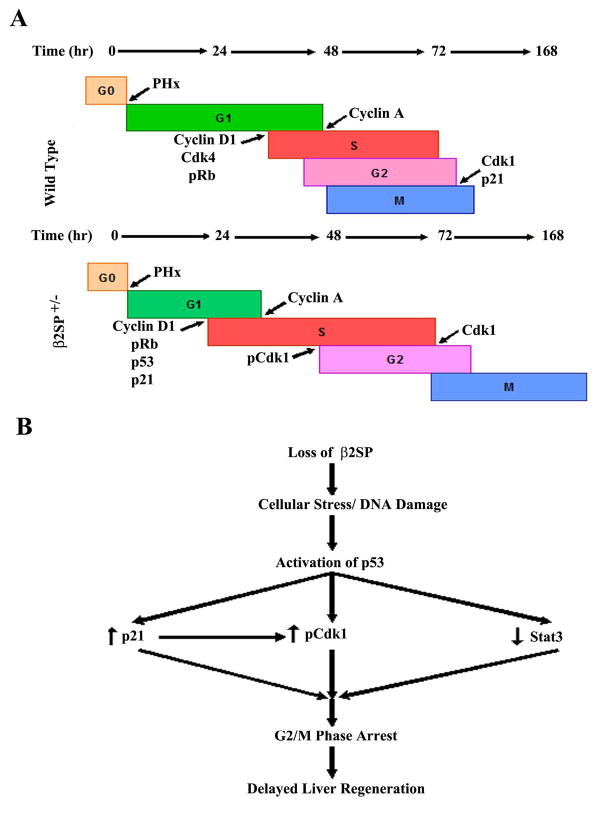Fig. 6.
Proposed model for the mechanism by which loss of β2SP leads to delayed liver regeneration following partial hepatectomy. (A) Cell cycle promoters are in green font, whereas inhibitors are in red. β2SP+/− mice appear to have slightly accelerated DNA synthesis but temporary G2/M-phase arrest leading to delayed liver regeneration. (B) Loss of β2SP increases susceptibility to cellular/DNA damage in proliferating hepatocytes and subsequent induction/activation of p53. p53, then induces expression of the cell cycle checkpoint protein p21, diminishes expression and phosphorylation of the key liver mitogen STAT3, and represses the mitosis-promoting factor Cdk1. These signals then lead to G2/M phase arrest until DNA can be adequately repaired and a subsequent delay in liver regeneration.

